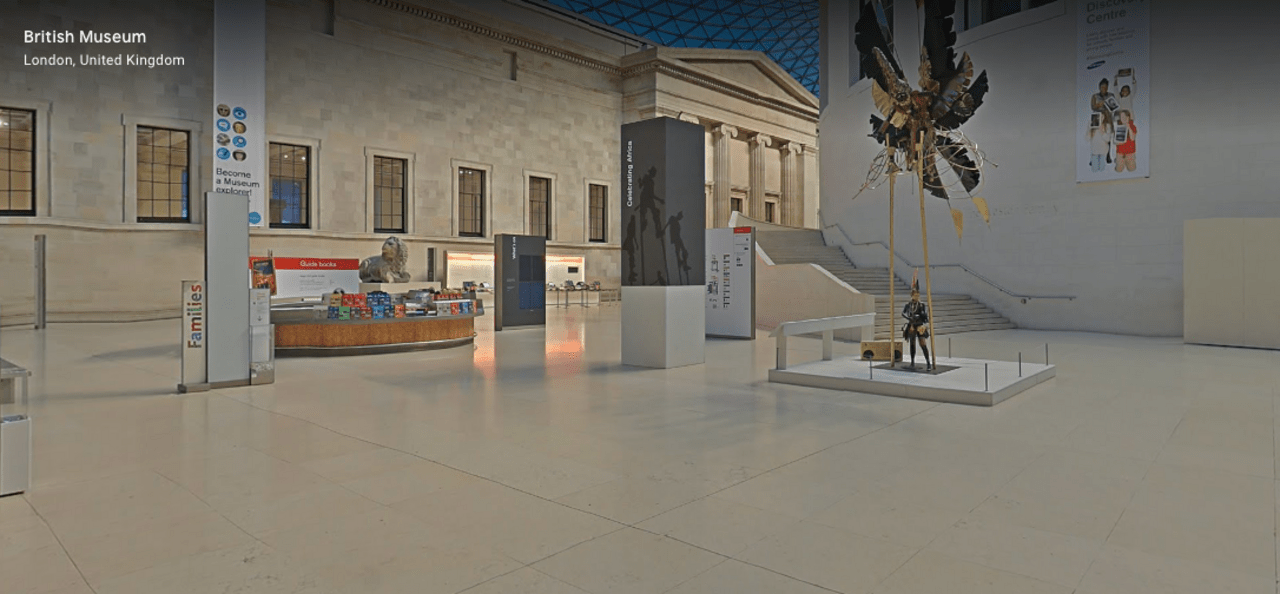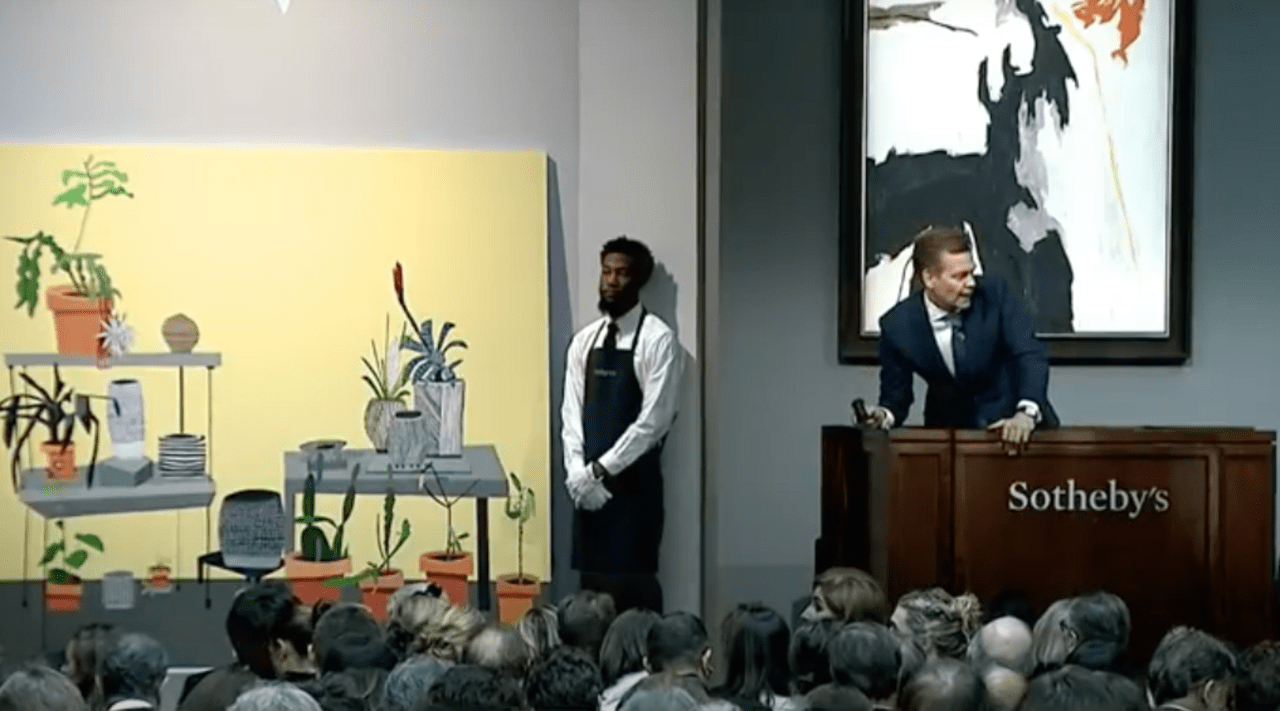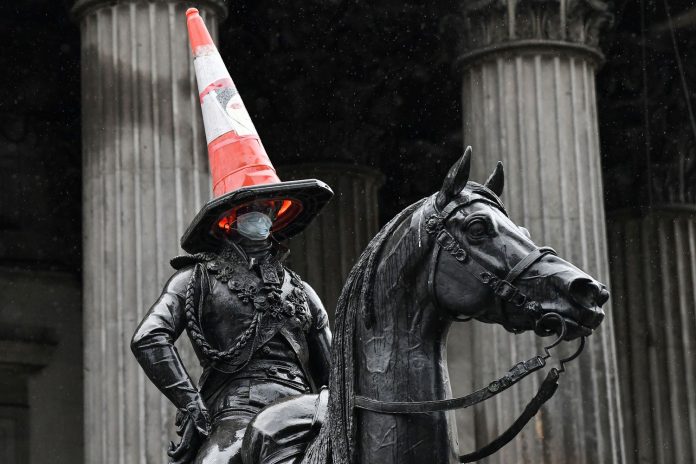The disaster caused by COVID-19 has the same general impact on artists and the art world as it does on any other life and economic area.
It ruins the lives of many artists. It threatens to bankrupt small art galleries and associated structures and lead to an even wider gap between the haves and have-nots.
A recent study by Art Newspaper and Rachel Pownall, professor of finance at Maastricht University, found that art galleries around the world are expected to lose an average of 72 percent of their annual income due to the pandemic.
A poll of 236 international art and antique dealers found the UK to have the largest drop at 79%, followed by Asia (77%), North America (71%), and the rest of Europe (66%).
About a third of art galleries worldwide (33.9 percent) do not hope to survive. According to a publication in Art Newspaper, given the vulnerability of small businesses, dealerships with 5-9 employees reported the lowest probability of survival (62%), while larger galleries with more than ten employees were more optimistic and three-quarters of them are expected to survive the crisis.
The survey found that art galleries can barely pay high rents for premises they can’t even enter, let alone trade — two-thirds of galleries report being either very concerned or worried about it.
For most small art galleries, this is existential decision time; they know that if they don’t get some form of rent relief now – be it a rent cut, a deferral, or a zero-out. In New York, the average art dealer’s rent is nearly 40 percent of all monthly expenses.
Alison Cole, the editor of Art Newspaper, told the Guardian that at the very top of the art world is the luxury industry, but many of the people who work in it – artists, processors, gallery workers – are in a very precarious position.
The greatest financial burden, as in any crisis, falls on those who are least able to bear it. The Wall Street Journal reported in April that the giant auction houses Sotheby’s and Christie’s would lay off staff and cut salaries.
The online newspaper Observer (formerly the New York Observer) commented on the situation, saying that auction houses, which of course rely heavily on the individual dynamics set in salesrooms and offices, are now trying to digitalize the entire business they do and a virtual arena.
In an article titled “The Last Days of the Art World … and Possibly the Early Days of the New World,” New York magazine art critic Jerry Saltz argues that the coronavirus disaster “will only exacerbate the inequality that increasingly dominates this universe: the survival of mega galleries and stars. art and the gap between them and everyone else only widens, making the more modest artists and small galleries something almost invisible. ”
The coronavirus acts here as a catalyst for a long-standing process. Saltz noted that conditions have been difficult in the past “for those not at the top of the food chain.
Numerous galleries reported that they were financially constrained by skyrocketing costs, had to pay to attend endless art fairs, and always fly to biennials and exhibitions around the world. Artists moved in droves from small art galleries to mega-galleries. COVID-19 has accelerated this a hundredfold.
The world of commercial art has grown exponentially in recent decades, in line with the surge in the stock market and the accumulation mania through parasitism and speculation. The Guardian newspaper in April pointed to the rise in wealth that has fueled the art world over the past 20 years – a period of erratic growth, museum expansion, auction price hikes, and art fairs increasing every month.
It is still unclear whether this whole process will come to an abrupt end. For auction houses, not all is lost even in the current environment. CNN reported that Sotheby’s, despite the closure of branches around the world and the layoff of staff due to the coronavirus pandemic, held its largest online art auction in history. Featuring works by Andy Warhol and Damien Hirst, the modern curated sale has grossed over $ 6.4 million.
The coronavirus pandemic has given the general population a harsh dose of reality. This, apparently, is associated with a surge of interest in art, history, and culture, as if masses of people suddenly, objectively driven by a terrible crisis, began to look for an answer to many complex problems.

Like numerous orchestras and opera troupes, museums and galleries began to upload their work and content to the Internet. Public resonance in many cases was enormous.
The British Museum’s online collection page jumped from about 2,000 daily visits to 75,000 a day. At the Courtauld Art Gallery in London, an art museum specializing in French Impressionist and Post-Impressionist paintings, the number of visitors attending a virtual tour increased by 723 percent. The website of the Louvre in Paris has been visited tenfold – from 40 thousand to 400 thousand visits a day.
Meanwhile, on the other side of society, bored rich people were buying half a million dollars’ worth of bracelets online, Bloomberg recently noted. To the surprise of Catherine Beckett of Sotheby’s, which is responsible for the auction house’s gorgeous jewelry, sales of collectible jewelry, Bloomberg reported, are doing well, very well.

How do artists, writers, and filmmakers speak about the current painful and controversial circumstances?
The current catastrophe makes the position of a serious and honest artist in bourgeois society even more impossible. Official politics in every country, from right to left, can only generate more and more disgust and horror.
The credibility of politicians who, with their brutal “return to work” policies, doom hundreds of thousands of people to death, should be largely dissipated. What’s next?
This pandemic also exposed the failure of the gender and race policies that have dominated the art world in recent years. What does all this have to do – the selfish striving of a handful of people for even more privileges and positions – what connection does all this have with the needs of the general population, whose very life is threatened by the continued existence of the profit system?
The majority of those who suffer are of the working class or the less privileged middle class.
The class question, once again – in the most graphic and horrifying way – has revealed its overwhelming significance. The objective situation requires, in our opinion, the artist’s turn towards historical and social reality.
The art market goes online

Because of the coronavirus pandemic most cultural industries and art institutions have completely switched to online work.
Museums and art galleries offer visitors alternative excursion options. They are, for example, photographic documentation and accompanying materials to 3D tours of exhibitions. They are quickly transferred from real physical space to virtual festivals and events.
So the 20th Biennale of Contemporary Art in Sydney, which was taken by surprise by the pandemic and its attendant restrictions, it was decided not to cancel, but to continue online.
As for the art market, the situation was much tenser. The first art fair to be hit by the epidemiological situation was Art Basel in Hong Kong. The organizers did not cancel it (as Frieze New York will do a little later) or postpone it (like Art Cologne, Dallas Art Fair, and, as it turned out just now, the main Art Basel in Basel). The Art Basel in Hong Kong was decided to be held online.
According to The Art Basel and UBS Global Art Market Report 2020, the percentage of online art sales relative to the total in 2019 was 9% ($ 5.9 billion in total). At first glance, it may seem that such a percentage is too insignificant to speak of a decisive role in the world art market.
However, network sales statistics make it clear that it is the online presence of art galleries that allows them to tackle one of the major challenges they face today. It’s about finding a new audience and attracting new customers.
So, according to the same The Art Basel and UBS Global Art Market Report 2020, for galleries with an annual turnover of up to $ 1 million, about 61% of online sales were made by new customers. For galleries with a turnover of more than $ 1 million, this percentage is slightly lower – 50%.
It should also be noted that works costing from $ 1000 to $ 5000 are most successfully sold online. The positive thing about online sales is obviously the ability to bridge the gap between the gallery /artwork and the potential buyer.
According to statistics, 77% of online sales in 2019 took place between art dealers and collectors, who were separated by a distance of more than a thousand kilometers. Of course, the simplification of the buying and selling process and the removal of the question of the need for personal presence also play a positive role.

All of the above suggests that online sales open up new opportunities for the art market. Perhaps it is precisely this reorganization of the sales system that will help remove the question of survival of many small and medium galleries from the agenda and make the art market as a whole more democratic.
One can object to this that high-quality targeted advertising is not a cheap pleasure, not to mention online viewing rooms, the maintenance of which (especially at first) may be more expensive than keeping a real gallery.
However, even with all these caveats, virtual sales could, at a minimum, reduce the tensions in matters of prestige. For example, one of the important expenses of small galleries is participation in art fairs.
In a comment for AFP, Frame Art Fair founder Bertrand Schoeller spoke quite sharply about this side of Art Basel: “If you are a beginner, you will not survive.”
Time, as they say, will show how pertinent doubts were and reasonable predictions about the future of virtual sales. Now we can say with confidence one thing: in the coming years the role of this sector of the art market will grow. Recent events related to the coronavirus epidemic have clearly shown that virtual reality can sometimes be much more reliable than physical reality.

























